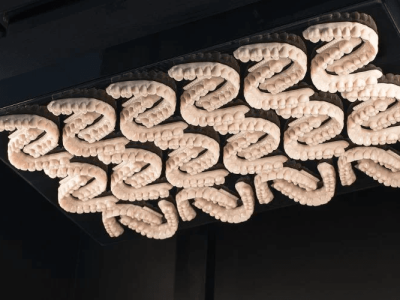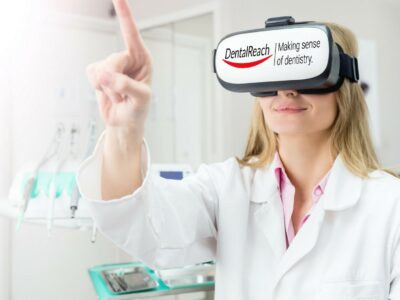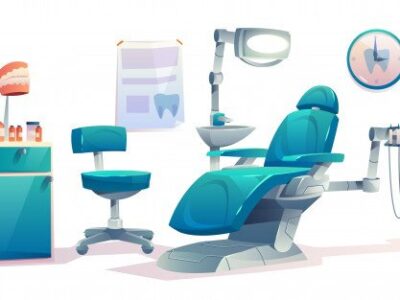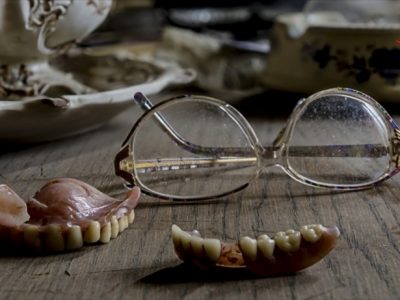The future prospects of dental profession lie in modern technology. Latest dental technology plays a crucial role in empowering general dentistry and provides the best treatment to its patient. Dental field has dynamically evolved in scientific understanding and technology. This has offered better dental solutions and broadened the horizons which enable dentists to improve the quality of treatment being provided to patient.
In what ways can technology improve our dental practice? Well, it has facilitated simplification of complex procedures that dentists once dreaded to take up. This has helped in providing superior and comfortable patient experiences for them. A host of innovations in dental care have created avenues for easy access and lower costs of dentistry. Newer technologies enable patient to be treated with less-invasive methods and better care. In a short span of time, dentists are providing the high standard treatment to its patient. Technological developments have transformed modern-day dental practice significantly beginning from diagnostics to high-end surgical procedures.
Intraoral Camera
Any patient walking into a dental clinic will be intraorally examined first. Intraoral camera is a lightweight tool to produce accurate images of teeth and oral cavities. This camera is available in most of the dental clinics to visualize dental problems. They serve as an excellent patient education tool with higher case acceptance rate and improved patient communication.
Digital Radiography and Teleradiology
Radiovisiography (RVG) has digitalized diagnostic dentistry which eliminated the requirement of dark rooms and processing. In a few seconds, the radiographs can be viewed on the monitor. They offer image enhancement which provides precision in the analysis of minute features such as cracks and caries that cannot be sensed using traditional film-based radiographs. Teleradiology has made it possible to take the opinion of radiologists and other dentists staying far off places.
Cone Beam Computed Tomography (CBCT)
Cone beam computed tomography (CBCT) has gained widespread popularity in recent times with vast areas of applications in dentistry. It has revolutionized implant planning enabling precise implant placement, viewing root canal anatomy and missed canals in endodontically treated teeth, the location of impacted teeth, dental traumatic injury detection, vertical root fracture detection, tumours and cysts. The 3D reconstructed images can serve as an excellent patient education tool.
Caries Diagnostics
Dental caries has been traditionally detected at the cavitation stage. Caries diagnostics classically meant examining the tooth and its softness at the base of the cavity resulting in operative management. The advent of non-invasive techniques including DIAGNOdent, Quantitative Light-induced Fluorescence (QLF), fibre-optic transillumination (FOTI), optical coherence tomography (OCT) and electronic caries monitor (ECM). These have created awareness among dentists regarding the importance of detecting non-cavitated lesions. Early detection will help in preservation of the tooth structure and its preventive management techniques.
Bioactive Dentistry
The introduction of smart materials has enhanced the restorative dentistry arena making remineralization a reality. Success with biomimetic materials and progress in tissue reconstruction with stem cells has opened new doors to restoration, replacement and repair of tooth loss structure. This will enable patients to sustain a healthy dentition throughout their lives.
CAD/CAM
In spite of undergoing for preventive and restorative measures, there will a tooth that needs to be replaced with a crown or bridge. Currently, computer-assisted design/ computer assisted manufacture (CAD/CAM) is employed to mill a tooth from a 3-D scan.
3-D Printing
3-D printing is the next big thing and it is being employed in dentistry to replace crowns, bridges and dental veneers. It is even possible to incorporate tooth decay-fighting chemicals into 3-D printed teeth. Other forms of bio-printing include building a jawbone lost due to periodontal disease and tumours.
Conscious Sedation
Anxiety control is an integral part of dentistry. Due to safety factor and effectiveness, conscious sedation using nitrous oxide is being utilized by more dentists. The patient remains conscious and is able to respond to verbal commands. So, needles are not required to calm down anxious and pediatric patients.
Dental Loupes
The magnification provided by dental loupes has made it possible to work with high visual performance.
Single Visit Root Canal Treatment
Endomotors, electronic apex locators and rotary endodontic files have made single sitting root canal treatments which are easily available to patients, eliminate their long and repeated appointments.
Laser Dentistry
The advent of lasers into dentistry has provided bloodless surgical procedures with minimized post-operative inflammation and almost painless healing period. Currently, lasers are replacing conventional, high-speed drills to treat tooth decay painlessly, gingival and periodontal disease, teeth whitening and surgical biopsies.
Invisalign
Invisalign consists of a series of clear, practically invisible customized removable aligners that gently straighten the misaligned teeth without undergoing the discomfort of wearing heavy metal braces. Patients will no longer have a metallic smile with diet restrictions.
Implants & Osseointegration Monitor
Implants are screw retained prosthetic replacements for missing teeth with the strength and feel of a natural tooth. Advancements in implant technology have led to improved treatment outcomes in recent times. Nowadays devices are available to precisely monitor osseointegration which makes it possible to view and store the measurements.
ZOOM! Whitening
Zoom! Whitening is a new state of the art whitening treatment that gives fast and easy results in one appointment. The latest treatment will make your teeth up to eight shades whiter.
Nanotechnology
Nanotechnology is yet another highly researched area which can haul oral health care to unprecedented heights. Nanoparticles can be utilized for tissue engineering, local drug delivery systems, prosthesis, implants, restorative dentistry, dental nanorobots for local anaesthesia. Oral fluid nanosensor test (OFNASET) and oral cancer diagnostics are few of the applications.
Oral Cancer Screening
The major goal of oral cancer screening is early detection to provide a greater chance of cure. Early detection of malignant disorders is made possible by recent advancements in screening of oral premalignant lesions that too, at the molecular level. VELscope is a simple process for the enhanced visualization of oral mucosal abnormalities including potentially malignant disorders and cancer. ViziLite is a painless screening tool for detection of small changes in oral mucosa and monitors abnormalities in patients at an increased risk for oral cancer. Other methods include spectroscopy, optical coherence tomography, immunohistochemistry etc.
A Peek into the Future?
It may not be wrong to anticipate technological advances that will allow patients to scan their own teeth in the comfort zone of their homes using their smart phones. This data can be analyzed and shared with the dentist to schedule an appointment for the appropriate procedure. It’s just a matter of time when all this will be possible.
The constant demand for new innovative solutions to dental care has helped in the advancement and evolution of dental research to best suit patient needs. The future of dentistry looks very different than present practice: no noisy drills, no painful injections, self-healing teeth, easier access and shorter treatment appointments. There will be greater emphasis on prevention leading to fewer diseased states. On an endnote, technological improvement has simplified dental practice with less invasive treatment options for patients. It is definitely transforming dentistry for the better.
References
- Drake D. Technology Expands the Scope of the General Practice. Dent Today 2017 Mar; 36(3):58, 60-1.
- Porter Y. Technology in practice: Its impact on Practitioners, Patients, and Dental Hygiene Education. The Healthcare guys 2018 Jan.
- Gomez J. Detectin and diagnosis of the early caries lesion. BMC Oral Health 2015; 15 (1): S3.
- Gupta S, Rakesh K, Gupta OP, Khanna S, Purwar A, Verma Y. Role of Nanotechnology and nanoparticles in dentistry: A review. IJRD 2013; 3: 95-102.
- www.123dentist.com
- Guynup S. How Technology is changing dentistry. Scientific American 2016 Oct.
Bonus: Download our monthly e-bulletin!Click here to get it
DISCLAIMER : “Views expressed above are the author’s own.”




















Comments